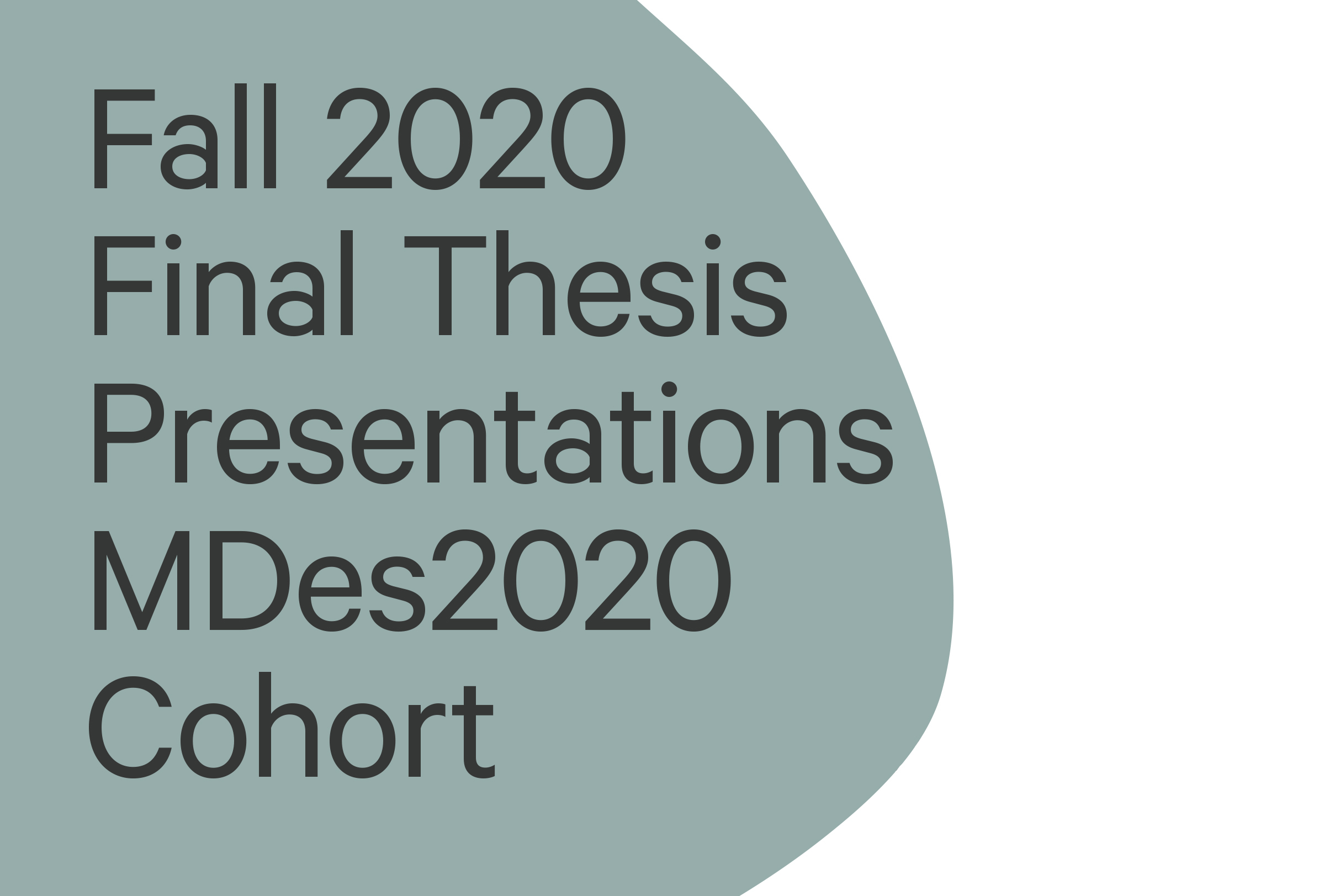Final Thesis Presentations MDes2020 | Leez (Yichun) Zhang

See the Smell: Participatory Design with the Lost Sense
Supervisor: Keith Doyle
Internal Reviewer: Garnet Hertz
External Reviewer: Sabrina Hauser
Smell is the only sensation that reaches the emotional and memory centres of the brain directly, which results in a close connection between memories, emotions, and odours (Shepherd, 2005). However, with the development of modern science and technology, the sense of smell has gradually come to be perceived as less important when compared to the other senses and the other ways we connect with our surroundings such as sight and hearing.
Current research into smell primarily focuses on explaining biological phenomena, such as the individual differences in olfactory perception and the mechanism of odour receptor genes, whereas the aesthetic aspect and how olfactory experience could be applied in visual arts is rarely examined.
This thesis explores the opportunities and creative methodologies of an alternative way of creating an interactive experience: applying smell to design to enrich the sensory experience. This project was led by several inquiries that questioned the affect that smell brings to people, unveiling deeper research potential in the process. It not only focused on people’s relationship with smell, but also explored the possibilities of applying olfactory stimuli to alternate fields in the search for balance between all five senses in the general design field.
The goal of this research has been to investigate the affective and evocative impacts of scent, review how scent is treated as a medium in a design context, examine the current usage of smell, especially in interac- tion design, and lastly, discuss the opportunities of combining smell with design to provoke communication.